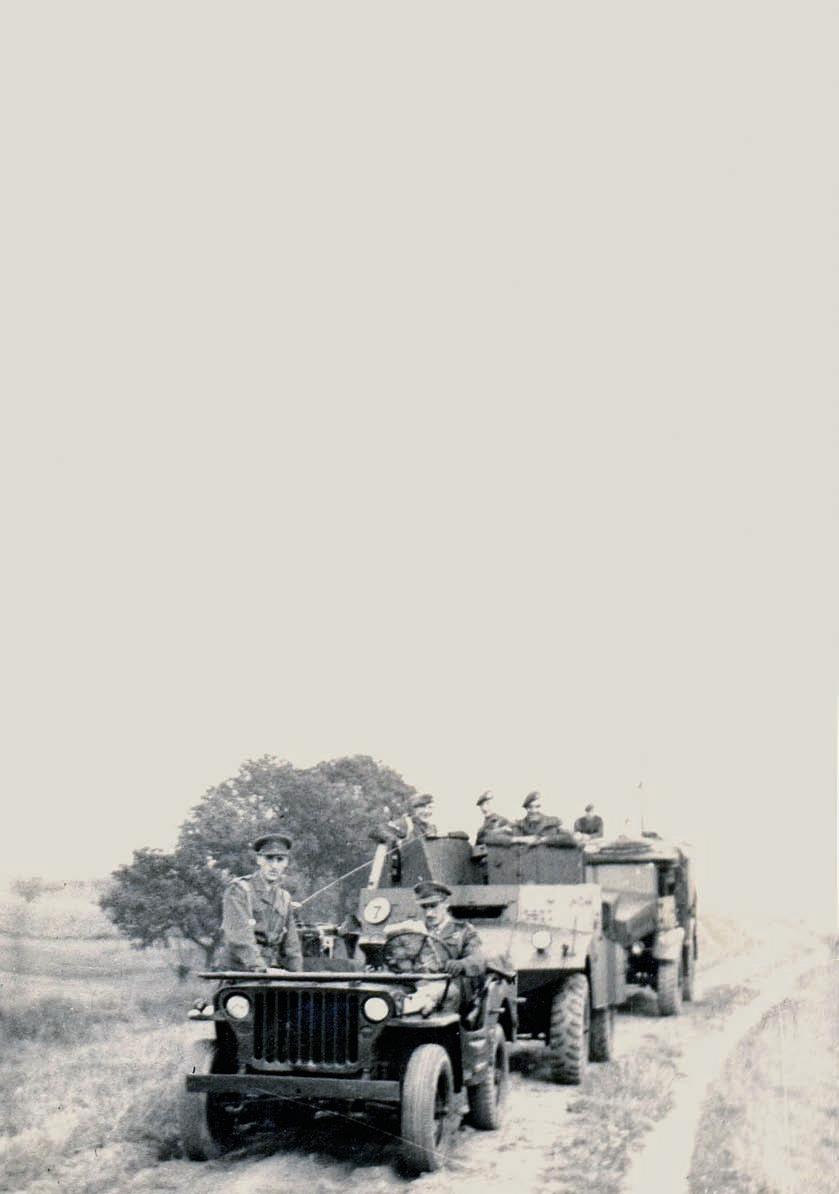
5 minute read
A History of the RGS in Its People
from ONA 92
A HISTORY OFTHE RGS IN ITS PEOPLE by David Goldwater (51-62)
In recent issues, we have concentrated on individuals who have left their mark on the school and much interest has been stimulated as ONs have recalled their own personal recollections of notable staff and pupils.
Advertisement
So regular have been the messages to Jane in the ON office and to myself, we thought it might be interesting at this point to recall some of this feedback. It also serves the purpose of connecting more ONs to the readership at large, numbering a surprising 5,500+. After all, what is the purpose of the ONA Magazine, if not to connect our membership to our readers?
Sydney ‘Sammy’ Middlebrook (18-58), Senior History Master and Second Master (from 1950)
David Selley (52-57), now living in Toronto enjoyed recalling Thomas Tucker Anderson (24-60), OW Mitchell (48-60) (see issue 86) and ‘Ma’ Steven (31-56) (issue 89). He remembers OWM sweeping into the classroom clutching his gown around him. David suggested an article on ‘his hero and mentor’ Sydney ‘Sammy’ Middlebrook (18-58), Senior History Master and Second Master (from 1950). Christopher Dean (45-53) recommended a piece on his father, George ‘Dixie’ Dean (24-67), who succeeded ‘Sammy’ as Second Master in 1958. May I appeal to as many readers as possible to send in their recollections of these two fine men who exemplified the best in RGS educational standards (email ONA office: ona@rgs. newcastle.sch.uk).
Colin Young (68-75) acknowledged the piece on John Elders (57-82)(issue 87): Good to see the old school doing so well. I particularly enjoyed the piece about John Elders in the current edition. Without doubt the most inspirational teacher I had in my time at the RGS – a great leader who always found time to encourage you to aspire to a higher level than you believed you could achieve and, who helped you get there.
Jim Reed (33-40), whose passing at 91 is sadly noted in the last issue (issue 91), remembered ‘Ma’ Jean Steven (issue 89) as ‘a formidable woman’. His son Bill, who would read the magazine to him, recalled his Dad’s friendship with Gordon Victor Smales (34-40), three of the four Tulloh brothers, Frank (34-41), Clifford (35-41) and Harold (35-41) and his time at Penrith. Keith Phillips (53-62) remembered her
But the most surprising contact was with ‘a near, but not quite’ Old Novo, Robin Ainsworth, daughter of the inspirational Jack Wolstenholme (48-75), (issue 88). Robin’s aunt and Jack’s cousin was Clara Teunon (57-72), who took over from ‘Ma’ Steven in the mid-’50s. She wrote that she is in occasional touch with Brian Varley (55-63), organist and chamber choir conductor at St Andrew’s, Bishop Auckland.
Since the last issue, there has been an amazing reaction from what turned out to be a very popular piece on the late Michael Roberts (25-31 and 34-41), the accuracy of which was underwritten by his sons, particularly the renowned Sir Adam Roberts, Emeritus Professor of International Relations at Balliol College, Oxford. He was born in Penrith in 1940 and lists mountaineering and cycling amongst his interests, so though not an ON, there certainly is a connection to the RGS of that time.
Brigadier Arthur Dowell (36-43), head of Eldon and captain of cricket 1943 writes of Michael Roberts: ‘in addition to taking chemistry lessons, he spent the first term of our school certificate year running an improvised Stock Exchange. We bought and sold shares in fictitious companies with names like ‘Aluminium Aircraft’, ‘Bread and Butter Ltd.’, ‘Everyday Appliances’ etc. I don’t think anyone made a fortune, but it was fun and his confidence in us was not misplaced: we all achieved good passes after two terms instruction, rather than three!’
Arthur also remembered Geoffrey Wheeler (45-48), whose obituary appeared in the last issue. ‘After leaving school in 1943, I spent most of the year on a wartime short course at New College, Oxford. There followed officer training in India and commissioning into the Royal Signals in July 1945. Then came the rather unexpected end to the war after the dropping of the atomic bombs on Hiroshima and Nagasaki…and there followed two idyllic years in Ceylon and six months in Burma…then, on my return to the UK in early 1948, a staff posting as a staff officer in Catterick, sharing an office with Geoff who was doing his National Service in the RAEC.’ Through his friendship with Geoff after the War at Catterick and his introduction to the Catterick Amateur Dramatic Society, Arthur met his future wife of 56 years and he and Geoff remained good friends throughout the years. Arthur also sent his good wishes to his school friends John Sinson (33-43) and Allan Wilson (36-43). It was a great surprise to have heard through LinkedIn from Simon Chester (57-67), a former partner with a Law firm in Toronto, Canada, now advising the Canadian Bar Association on Conflicts of Interest. In his final year at school, Simon was ‘Plender Librarian’ – one of the discoveries [he] made in that period, in locked cupboards under the main shelves, was Michael Roberts’ collections of poetry and magazines from the ’30s and ’40s’. He noted that reading the small magazines and volumes gave him a different view of the Spanish Civil War and the advance to WWll.
Frank Simm (36-43) is one of those who originally suggested a piece on Michael Roberts. Frank described him as ‘inspirational…’ He also wrote of the mock Stock Exchange in almost identical terms to his contemporary Arthur Dowell. ‘Nuclear fission of heavy atoms had recently been achieved and [Roberts] explained how in accordance with Einstein’s equation E=mc2, there was the potential for a massive release of thermal energy and the possibility of an atomic bomb. Few realized this at the time.’ But the main ‘agitation’ for an article on this unique teacher has come from Walter Wood (37-44), who came in to school with his son and grandson, Simon (72-77) and Edwin (Year 13), reported on page 15 of this issue.
Please note the request for recollections of Sydney ‘Sammy’ Middlebrook and George ‘Dixie’ Dean. By post, e-mail (see above) or any other suitable method, noting the deadline for the next issue!
George Dean (24-67), Science Master and Second Master (from 1958)






